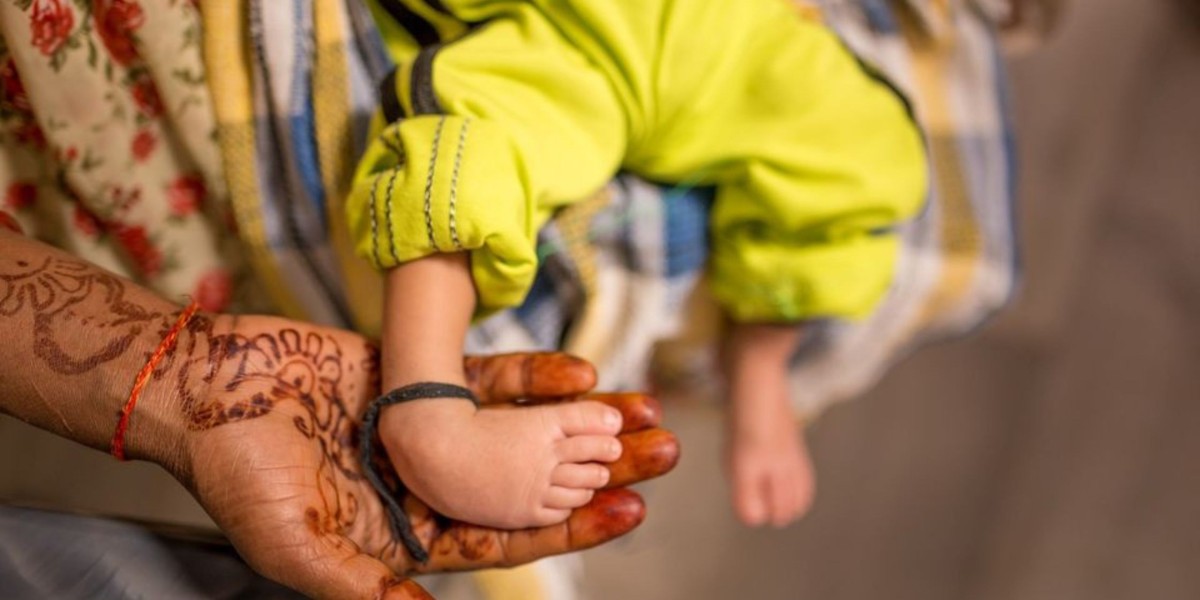Introduction
Clubfoot is a congenital deformity that affects thousands of infants worldwide. While the exact causes of clubfoot are still not entirely understood, genetic factors are known to play a significant role. In this in-depth article, we will explore the genetic basis of clubfoot, shedding light on the complexities of this condition and its implications for affected individuals and their families.
What is Clubfoot?
Before delving into the genetic aspects, let's briefly understand what clubfoot is. Clubfoot is a congenital condition where a baby is born with one or both feet turned inwards and downwards. The foot appears twisted, resembling the sole of a golf club, hence the name "clubfoot."
Types of Clubfoot
There are two primary types of clubfoot:
- Isolated Clubfoot: This occurs when clubfoot is the only congenital condition present in the affected individual.
- Complex Clubfoot: Complex clubfoot is associated with other congenital anomalies or syndromes, making it a part of a more extensive medical condition.
The Role of Genetics
Genetic factors have been identified as one of the leading causes of clubfoot. Research suggests that clubfoot tends to run in families, indicating a hereditary component.
Familial Incidence:
Studies have shown that if a close family member, such as a parent or sibling, has clubfoot, the risk of another family member having it increases significantly. This familial clustering points towards genetic inheritance.
Twin Studies:
Twin studies have further supported the genetic link to clubfoot. Identical twins, who share the same genetic makeup, are more likely to both have clubfoot compared to non-identical twins.
The Complex Genetic Basis
While genetic factors are undoubtedly involved, the genetics of clubfoot are intricate. It is not a straightforward single-gene disorder. Instead, clubfoot appears to result from a combination of genetic and environmental influences.
Polygenic Inheritance:
Researchers believe that clubfoot is a polygenic disorder, meaning that multiple genes contribute to its development. These genes may interact in complex ways, making it challenging to pinpoint specific genetic mutations responsible for clubfoot.
Environmental Factors:
In addition to genetics, environmental factors may also play a role in the development of clubfoot. Factors such as intrauterine crowding, maternal smoking during pregnancy, and low amniotic fluid levels have been associated with an increased risk of clubfoot.
Genetic Studies and Discoveries
Despite the complexity of clubfoot genetics, researchers have made significant strides in understanding the condition's genetic basis.
Chromosome Abnormalities:
Studies have identified certain chromosome abnormalities that are more common in individuals with clubfoot. These abnormalities can disrupt normal fetal development and contribute to the condition.
Candidate Genes:
Researchers have also identified several candidate genes that may be involved in clubfoot. These genes are associated with muscle and connective tissue development, which are crucial for normal foot development.
Ongoing Research:
Ongoing genetic research aims to unravel the specific genetic mutations and mechanisms that contribute to clubfoot. These discoveries hold the potential to improve diagnostic accuracy and develop targeted treatments.
Clinical Implications
Understanding the genetic causes of clubfoot has several clinical implications:
Early Diagnosis:
Genetic testing and prenatal screening may help identify clubfoot in utero or shortly after birth. Early diagnosis allows for timely intervention and treatment planning.
Family Counseling:
Families with a history of clubfoot can benefit from genetic counseling. Genetic counselors can provide information about the risk of recurrence and help families make informed decisions about family planning.
Targeted Therapies:
As our understanding of clubfoot genetics advances, targeted therapies and interventions may become possible. Tailored treatments based on an individual's genetic profile could lead to more effective outcomes.
Conclusion
Clubfoot is a complex condition with a significant genetic component. While researchers have made substantial progress in uncovering the genetic factors involved, much remains to be learned. Understanding the genetic causes of clubfoot is not only essential for advancing medical knowledge but also for improving diagnostic accuracy and treatment options.
FAQs
- Can clubfoot be detected before birth through genetic testing?
- While genetic testing may offer insights, clubfoot is typically diagnosed after birth through physical examination.
- Is clubfoot solely a genetic condition?
- No, clubfoot is believed to result from a combination of genetic and environmental factors.
- Is there a specific gene responsible for clubfoot?
- Clubfoot is a polygenic disorder, meaning it involves multiple genes. Specific genes are still being studied.
- What can families with a history of clubfoot do to reduce the risk of recurrence?
- Genetic counseling can help families understand their risk and make informed family planning decisions.
- Are there ongoing research efforts to further understand clubfoot genetics?
- Yes, ongoing research aims to uncover the specific genetic mutations and mechanisms behind clubfoot to improve diagnosis and treatment.








